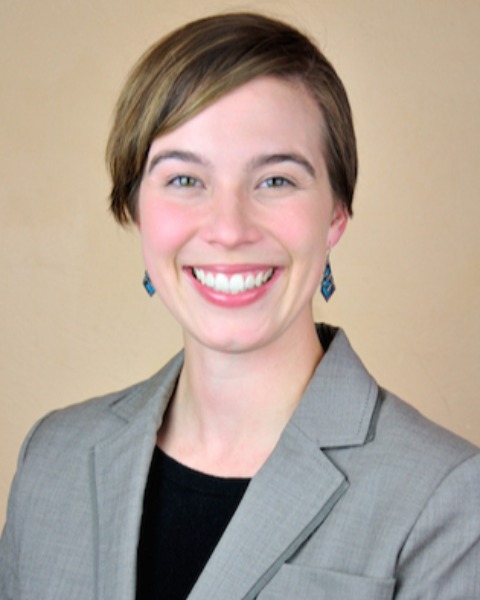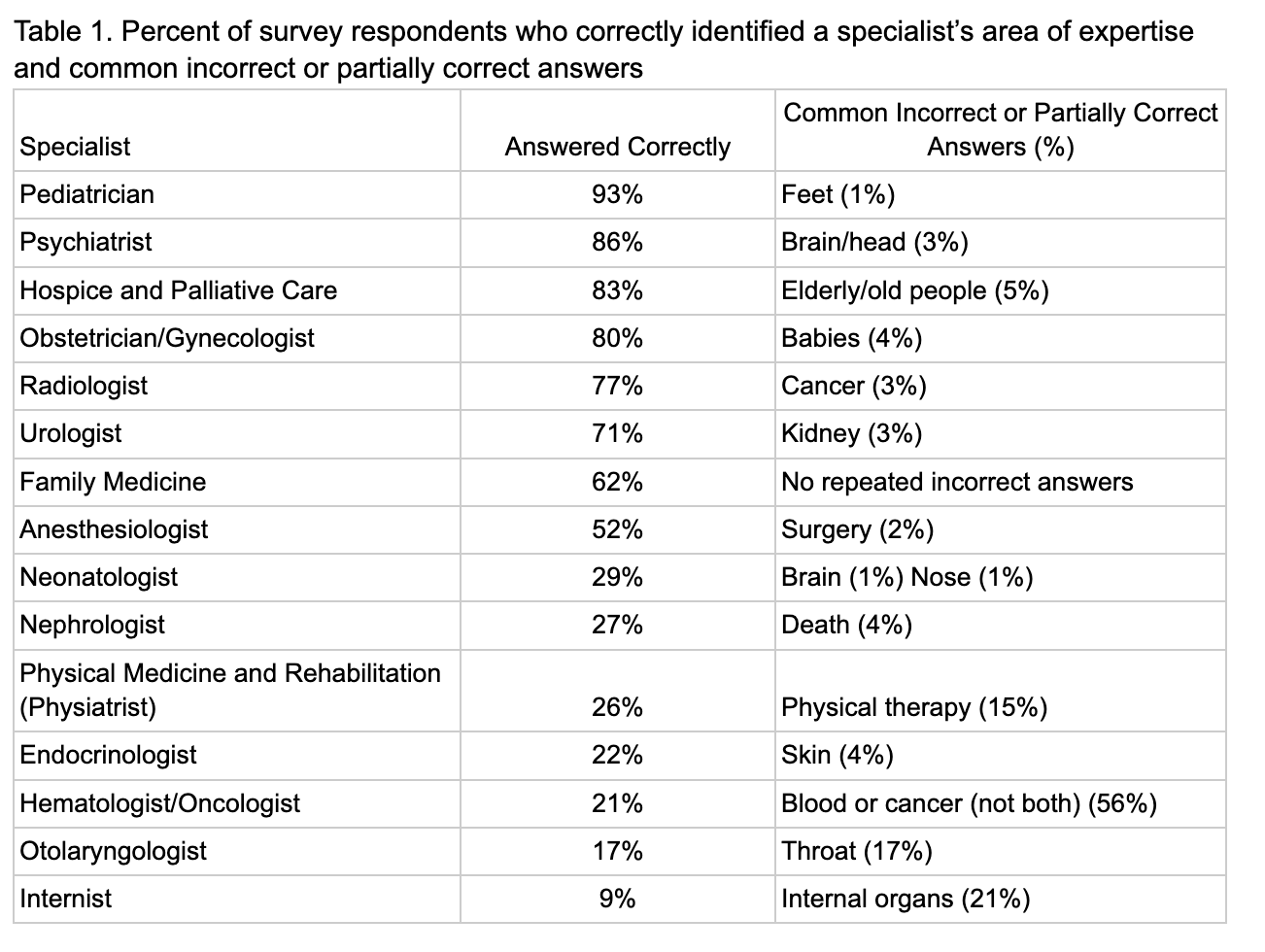General Pediatrics
Session: General Pediatrics 4
357 - An Internist By Any Other Name Is…Likely Less Confusing
Saturday, May 4, 2024
3:30 PM - 6:00 PM ET
Poster Number: 357
Publication Number: 357.1367
Publication Number: 357.1367

Emily Hause, MD MPH (she/her/hers)
Assistant Professor
University of Minnesota Masonic Children's Hospital
Minneapolis, Minnesota, United States
Presenting Author(s)
Background: In a 2021 study of Minnesota State Fairgoers, as a representative sampling of the lay public, researchers demonstrated that medical specialty titles are a source of confusion. We conducted a methodologically similar, yet expanded, survey at the 2023 Minnesota State Fair to assess public understanding of additional specialties, while validating findings from the 2021 study.
Objective: To determine public understanding of specialty names
Design/Methods: We developed and validated a novel survey of medical specialties. Volunteers >18 years-old with no prior medical or nursing training completed a brief REDCap survey on an iPad, answering questions like: “An anesthesiologist is a doctor who specializes in ___?” Four specialties were repeated from our 2021 survey to assess internal validity, and eleven new specialties were included. Two independent reviewers coded survey responses, with a third settling discrepancies.
Results: 283 people completed the survey (61% female and 64% with a bachelor’s degree or higher). The specialties with the highest percent of accurate definition by participants were pediatrician (93%), psychiatrist (86%), and hospice/palliative care physicians (83%), obstetrician/gynecologist (80%) and radiologist (77%). Specialists with lowest levels of recognition included nephrologist (27%), hematologist/oncologist (21%), endocrinologist (22%), otolaryngologist (17%), and internist (9%). Of the 15 specialties surveyed, 8 were understood by less than half of fairgoers surveyed (Table 1). We detected a 4-12% variation in public recognition of fields of medicine which we surveyed in 2021 and retested in 2023, demonstrating internal validity. Commonly submitted wrong answers included nephrologists as physicians dealing with death and internists managing only internal organs.
Conclusion(s): Surveying the public on an expanded list of medical specialties unveils significant misunderstanding. Medical providers should be aware of this gap and introduce medical fields or specialties in plain language.

